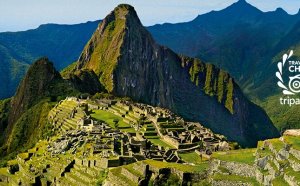
Peru information and Facts
• Capital City: Lima (Metro region Population: 9 million)
• place and Borders: Western South America, bordering the South Pacific Ocean, between Chile and Ecuador
• Administrative Divisions: 25 regions (regiones, single: región); Amazonas, Ancash, Apurimac, Arequipa, Ayacucho, Cajamarca, Callao, Cusco, Huancavelica, Huanuco, Ica, Junin, Los Angeles Libertad, Lambayeque, Lima, Loreto, Madre de Dios, Moquegua, Pasco, Piura, Puno, San Martin, Tacna, Tumbes, Ucayali. 1 province (provincia); Lima
• region: Total: 1, 285, 220 sq km
Land: 1.28 million sq kilometer
Liquid: 5, 220 sq km
• Climate: varies from tropical when you look at the East to dried out wilderness when you look at the western; temperate to frigid inside Andes
• Populace: 28, 674, 000
• Demographic Development Price: 1.3percent
• Industries: mining and refining of nutrients; steel, steel fabrication; petroleum extraction and refining, propane; fishing and seafood handling, fabrics, garments, food-processing
• Languages: Spanish (official), Quechua (official), Aymara, and a large number of small Amazonian languages
• Government program: constitutional republic
Elements of Peru
Peru, a country made up of deserts, mountains and huge woodlands, happens to be versus a continent with many countries, many climates and several various ethnic groups. Even though it can be found in a tropical location, the peaks of various heights within the Andes mountain range that either block or replace the span of the winds, the currents that circulation through its sea - the cool Humboldt current from south and the hot Niño present from equator - are among the factors why the environment is not in line with the latitude, creating a multitude of surroundings, each along with its own wildlife and farming and forestry resources. In fact, 83% worldwide's ecosystems or wildlife zones are located in Peru. Due to its extraordinary biodiversity, a lot more than 400 types of mammals, 1, 700 types of wild birds (26% of all wild birds with this earth), 2, 000 species of salt water and fresh-water seafood and 35, 000 types of flowers were catalogued up to now. The Tambopata-Candamo Reserve holds society record so far as the diversity of wild birds can be involved, while Yanamono in Loreto, has got the best diversity of trees on earth: 300 species per hectare duly identified.
The enormous majority of these types live in the 46 protected all-natural places, which cover 10per cent for the nationwide area. Probably the most important ones will be the Paracas Natural Reserve, the Manu All-natural Reserve, the Tambopata-Candamo Reserve, therefore the Pacaya Samiria Reserve (near Iquitos), that are considered to be the richest on earth, given their particular extraordinary wealth of plants and creatures.
RELATED VIDEO



Share this Post
Related posts
Peru Facts and info
Huaynaputina volcano (its name meaning new volcano ) is a small volcano situated in south Peru 26 kilometer south of Ubinas…
Read MoreMachu Picchu Peru information
Damages of Machu Picchu (Enlarge) The damages of Machu Picchu, rediscovered in 1911 by Yale archaeologist Hiram Bingham…
Read More

